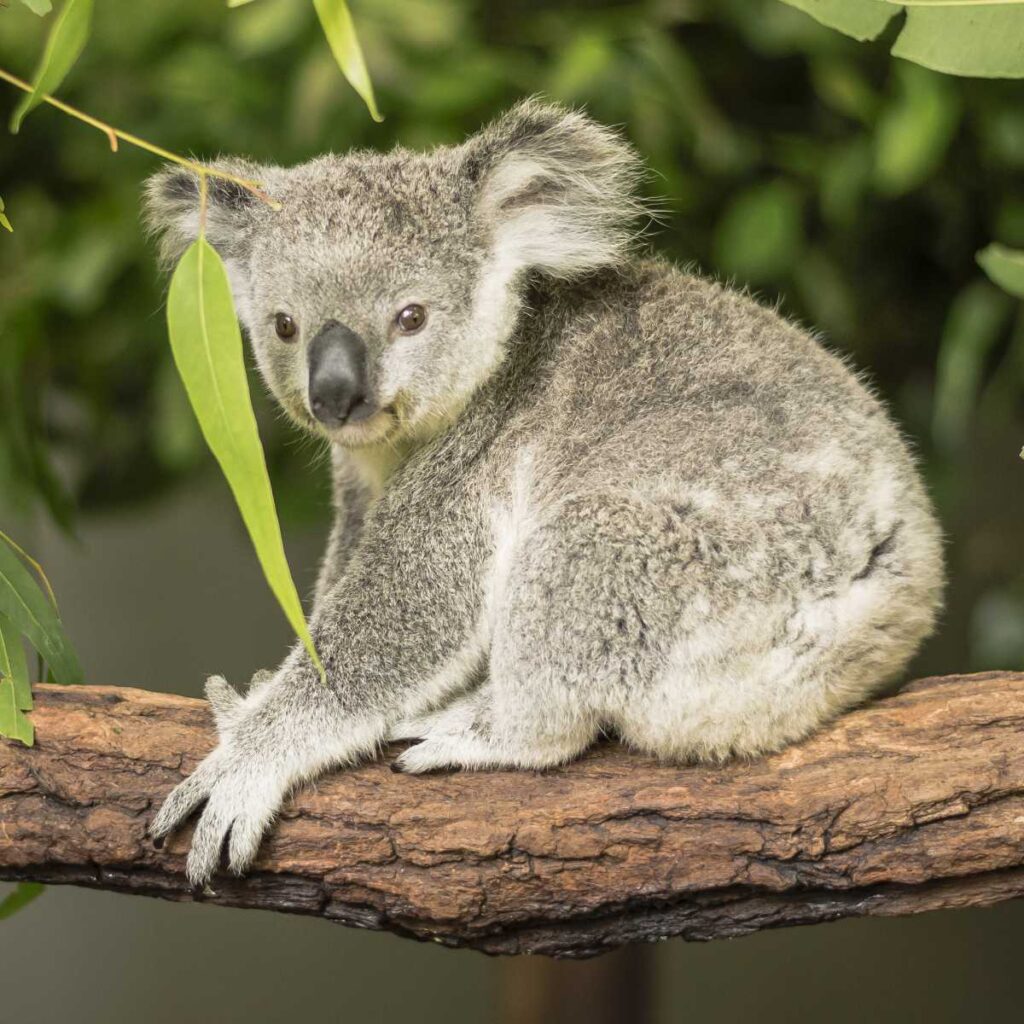Last Reviewed and Updated on July 26, 2022
Koalas are an iconic yet unusual animal. One of Australia’s most iconic native animals has quite a bit of unique features. Some of these facts about koalas will make you love these furry animals even more, and some will raise your eyebrows.

1. Most of their diet is eucalyptus leaves
It is safe to say koalas are picky eaters. Their diet consists mostly of eucalyptus leaves, and even though there are over 600 different species of eucalyptus available to them, koalas show a strong preference for just about 30.
They will occasionally eat other plant leaves, bark, flowers as well as other things.
2. When they are born, they aren’t capable of digesting eucalyptus
What may come as somewhat of a surprise is that koalas aren’t born with the ability to digest eucalyptus. Young koalas don’t have the necessary gut bacteria to digest eucalyptus. When they are about six months old, they will get a special treat from their mothers to prepare them for the eucalyptus diet.
The mother starts producing a special fecal pap (yes, special poop) that the young koala eats from the mother’s cloaca. This fecal pap is different from other feces, and it has a high concentration of gut bacteria. Through this, the koala gradually gets all the bacteria it needs to digest eucalyptus in its adult life.
3. Females and many males don’t drink water under normal conditions
Eucalyptus leaves have a high water content, so koalas get most if not all the water they need from their diet. Larger males may need to find additional sources of water as they may not meet all of their water requirements through their diet. They will search for water on the ground or in tree hollows.
4. Their fingerprints are indistinguishable from humans
One of the most interesting facts about koalas is their fingerprints. Koalas are one of the few animals that have fingerprints. The size and complexity of their fingerprints are almost the same as that of a human, so they are able to tamper with crime investigations. Luckily the chances of koalas being present at a crime scene are incredibly small. But this is still something investigators have to keep in mind.
5. Their brain-to-body ratio is very small
Koalas have a small brain, in fact, they have one of the smallest brain-to-body ratios in mammals. Their brain size is probably an adaptation to their diet, as their diet isn’t able to sustain a larger brain.
6. Their brains are also fairly smooth
In addition to having one of the smallest brans for its size, koalas’ brain is also fairly smooth.
Both the size of the brain and its smoothness of it, koalas have a limited ability to perform complex behavior as well as being unable to understand unfamiliar situations. One example of this is if you offer a koala plucked eucalyptus leaves on a plate, it won’t eat them as it won’t understand they are the same leaves as those growing on the tree. Not exactly the most flattering of facts about koalas.
7. Koalas sleep a lot
They sleep about 20 hours per day. They don’t get much energy from their diet, so they must conserve energy and limit its use. The four waking hours are mostly spent on feeding. It’s all about sleeping and eating for koalas.
8. Koalas have a huge STD problem
Chlamydia is widespread in many koala populations; in some populations, the whole population is affected. Researchers are putting a lot of effort into solving this issue.
9. They may be called koala bears but aren’t even closely related to bears
These animals do look a little like small bears, and this is the reason why they are commonly, but inaccurately, called koala bears. They are marsupials which makes wombats their closest relatives along with kangaroos, wallabies, and opossums.
10. Like kangaroos, koalas have pouches
One of the main features of marsupials is the pouch present in all female marsupials. Koalas are no different.
11. They have impressive control of their gut
They can retain food in their gut for up to 100 hours in the wild and even 200 in captivity. Koalas have the largest caecum (pouch at the beginning of the large intestine) of all animals. What is most extraordinary is koalas can choose which food particles they retain for longer fermentation and which ones should just be passed through their gut. They push out large particles more quickly than smaller ones, as large ones would take more time and energy to digest.
12. Male koalas have curvier larger noses
One of the most prominent features of koalas is their dark rectangle-shaped nose. Males more often take the spotlight on posters as their noses are way more prominent.
